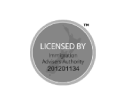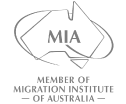Australia’s Temporary Skill Shortage (TSS) Subclass 482 visa serves as a critical gateway for skilled professionals aiming to transition to permanent residency (PR). Recent regulatory changes, including the introduction of the Skills in Demand visa and streamlined eligibility criteria, have transformed the landscape for employer-sponsored migrants. This analysis examines the evolving pathways, eligibility requirements, and strategic considerations for optimizing PR outcomes under Australia’s skilled migration program.
Employer-Sponsored Pathways: Transitioning Through the Temporary Residence Stream
The Temporary Residence Transition (TRT) Stream
The TRT stream under the Employer Nomination Scheme (Subclass 186) and Regional Sponsored Migration Scheme (Subclass 187) remains the primary route for 482 visa holders. Key revisions implemented in November 2023 reduced the required employment period with the sponsoring employer from three years to two, significantly accelerating PR eligibility[2][4]. Applicants must now demonstrate:
- Continuous full-time employment in their nominated occupation for 24 months
- An occupation aligned with the Medium and Long-term Strategic Skills List (MLTSSL) or Regional Occupation List (ROL)
- Competent English proficiency (IELTS 6.0 or equivalent), with exemptions for high-income earners and certain passport holders[18]
- Age under 45 at application, though exemptions exist for transitional 457/482 workers earning above the Fair Work High Income Threshold[15]
The TRT pathway now accommodates occupations previously restricted to short-term lists, broadening access for roles in healthcare, technology, and skilled trades[4][14]. Regional applicants benefit from additional concessions, including extended age limits and priority processing under the Designated Area Migration Agreements[1][9].
The Skills in Demand Visa Framework
Scheduled to replace the 482 visa in late 2024, the Skills in Demand visa introduces three distinct pathways with enhanced PR access:
- Specialist Skills Pathway: For roles with salaries exceeding AUD 135,000, featuring seven-day processing benchmarks
- Core Skills Pathway: Covers 90% of current TSS occupations, requiring alignment with the updated Core Skills Occupations List
- Essential Skills Pathway: Addresses labor shortages in care sectors through industry-specific agreements
This reform triples the permissible gap between employers to 180 days and reduces the PR eligibility period to two years, provided applicants maintain continuous skilled employment[2][17]. The visa’s four-year validity period allows multiple employer transitions without requiring new sponsorship applications, enhancing labor market flexibility.
Alternative PR Pathways for 482 Visa Holders
General Skilled Migration (GSM) Options
For professionals unable to secure employer sponsorship, Australia’s points-tested visas offer viable alternatives:
- Skilled Independent Visa (Subclass 189): Requires nomination of an occupation on the MLTSSL and a minimum points score of 65, prioritizing younger applicants with superior English proficiency and advanced qualifications[6][10]
- Skilled Nominated Visa (Subclass 190): Mandates state/territory nomination, with jurisdictions maintaining separate occupation lists and eligibility criteria[7]
- Skilled Work Regional Visa (Subclass 491): Provisional five-year visa for regional workers, transitioning to PR via the Subclass 191 visa after three years of residence and meeting income thresholds[8][12]
Recent reforms to the points system emphasize advanced STEM qualifications and superior English test scores, with priority given to applicants under 35[11]. Strategic state nominations, particularly in Western Australia and South Australia, have emerged as reliable pathways for IT and healthcare professionals.
Labour Agreement and Global Talent Streams
Specialized arrangements under the Subclass 186 Labour Agreement Stream enable sponsorship for occupations not on standard lists, subject to demonstrated workforce shortages. The Global Talent Visa (Subclass 858) provides accelerated PR for exceptional individuals in target sectors, bypassing conventional skill assessments and age restrictions[13].
Critical Considerations for Successful Applications
Navigating Age Restrictions
While the standard age limit for employer-sponsored PR remains 45, transitional 457/482 workers may qualify for exemptions by maintaining annual earnings above the Fair Work High Income Threshold (currently AUD 167,500)[15]. Regional applicants over 45 gain eligibility through state-specific protocols, particularly in sectors like aged care and disability services[9].
Skills Assessment Requirements
A positive skills assessment from the designated authority remains mandatory for GSM pathways and certain employer-sponsored streams. Processing times vary from 8-16 weeks, necessitating early preparation. Engineers Australia and ACS (IT professionals) have implemented fast-track options for applicants with Australian qualifications[16].
Health and Character Clearances
All PR applicants must satisfy rigorous health examinations, including chest X-rays and HIV/hepatitis screening, conducted through approved panel physicians. Character requirements mandate police certificates from every country of residence exceeding 12 months over the past decade, with enhanced scrutiny for applicants from jurisdictions with high fraud incidence[19].
Strategic Planning for PR Success
Optimizing Points Test Outcomes
Proactive strategies to maximize GSM points include:
- Achieving superior English test scores (IELTS 8.0+ adds 20 points)
- Completing Australian professional year programs (5 additional points)
- Securing state nomination for Subclass 190/491 visas (15 points)
- Obtaining skill assessments for secondary occupations
The reformed points system now prioritizes human capital factors over geographic location, favoring applicants with PhD qualifications and multiple skilled employment references[11].
Managing Employer Transitions Under New Visa Rules
The Skills in Demand visa’s 180-day employment gap provision allows strategic career moves without jeopardizing PR eligibility. However, applicants must ensure:
- Continuous employment in the nominated occupation
- Updated skills assessments for role changes
- Timely notification to Home Affairs of employer transitions
Regional Migration Advantages
Designated regional areas offer numerous incentives, including extended post-study work rights, priority processing, and access to the Regional Occupation List. The Subclass 187 RSMS visa, though being phased out, still provides transitional opportunities for long-term regional workers[9][12].
Future Developments in Australian Skilled Migration
Anticipated reforms include:
- Expansion of the Core Skills Occupations List to address post-pandemic workforce gaps
- Introduction of sector-specific labor agreements for renewable energy and advanced manufacturing
- Digital nomad visa trials targeting IT professionals in regional tech hubs
- Streamlined skills assessment reciprocity agreements with OECD nations
These changes underscore the importance of maintaining flexible career trajectories and continuous skill development. Professionals should monitor updates to the Migration Strategy and engage registered migration agents to navigate evolving requirements.
For 482 visa holders, Australia’s multilayered PR pathways demand strategic planning but offer unparalleled opportunities for skilled professionals. By aligning career moves with policy priorities, maintaining compliance across visa conditions, and leveraging regional incentives, applicants can successfully transition to permanent residency while contributing to Australia’s economic priorities.










